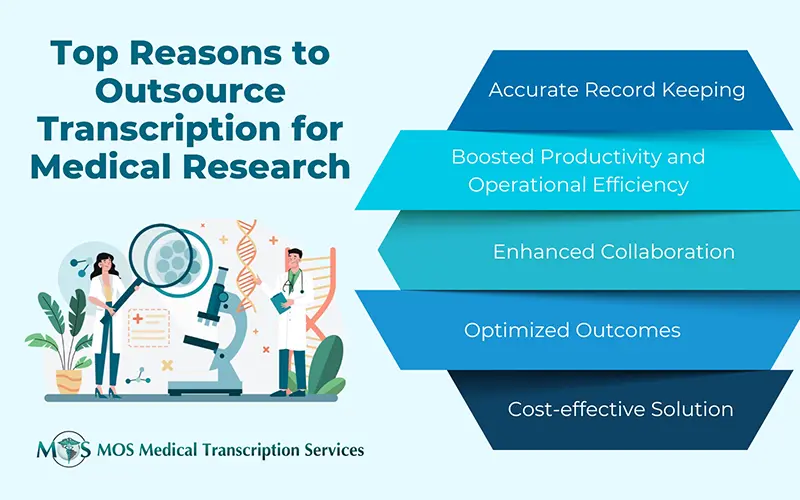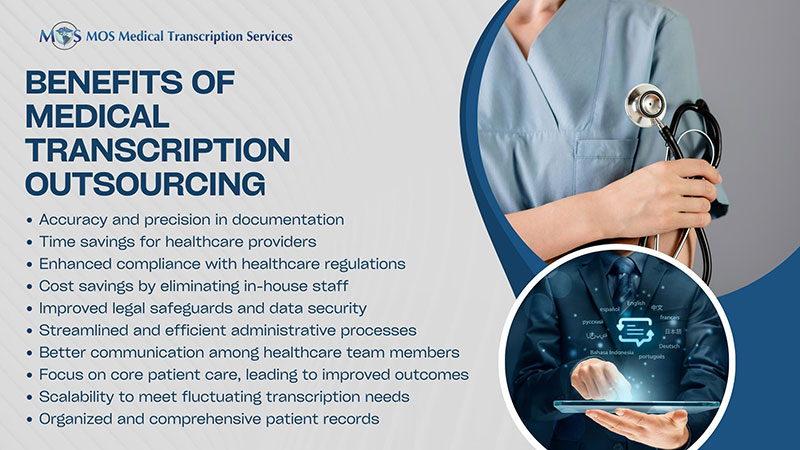Patient-centered care is an adage that has been always upheld by healthcare providers. Today, it is growing in prominence with patients turning into consumers and the move from the fee-for-service to the fee-for-performance reimbursement models. Medical transcription outsourcing plays a key role in improving the patient experience by helping physicians with their tedious EMR-EHR documentation tasks so that they can communicate effectively with their patients. There are many other drivers of patient satisfaction. A recent Physicians Practice article says that focusing on good patient satisfaction can reduce malpractice risks.

Patient Satisfaction Surveys
Industry leaders support the use of patient satisfaction surveys to assess patient satisfaction and identify opportunities for quality improvement. The Centers for Medicare & Medicaid Services (CMS) reinforces the idea of assessing and achieving strong patient satisfaction scores by incorporating Hospital Consumer Assessment of Healthcare Providers and Services (HCAHPS) scores into its inpatient prospective payment system. The HCAHPS survey incorporates 18 patient perspectives on care that cover eight central topics:
- Communication with doctors
- Communication with nurses
- Responsiveness of hospital staff
- Pain management
- Communication about medicines
- Discharge information
- Cleanliness of the hospital environment
- Quietness of the hospital environment
Conducting Patient Satisfaction Surveys
A study published in the Oman Medical Journal reported that patient surveys are around 94 percent accurate when it comes to revealing how patients feel about the quality of care received at a practice. But reliable and valid patient satisfaction measurement tools are necessary to collect patient feedback effectively. To encourage participation and get quality information, it’s important to ensure that the questions are easy to understand and unbiased. Some of the key areas to cover are:
- Ease of scheduling an appointment
- Quality of care – whether the patient was satisfied with the care provided
- Communication – ease and quality of physician and staff communication
- Convenience – Experiences in getting services from multiple providers and navigating the different components of the system
- Overall comfort – whether the patient was comfortable throughout the visit
Make sure that the survey is not too long and that the questions are short and simple. Asking constructive questions and asking for suggestions will allow changes or improvements to be made based on the answers.
Once the questionnaire is designed, providers have to think of how to conduct patient satisfaction surveys. There are several ways to do this:
- The questionnaire can be distributed at the reception desk. Patients can complete the anonymous survey while they are in the office and drop them in the designated box.
- Full length surveys can be sent out on a regular basis by mail. The Physicians Practice report recommends sending surveys within 24 hours to 48 hours of a visit and also between visits for the best reach.
- A simple one-question survey conducted after each visit can provide a quick impression of patients’ satisfaction and loyalty and help physicians track their “net promoter” score (NPS). This strategy involves asking patients to rank their responses on a scale from 0 to 10 – low scores would indicate a lack of enthusiasm to provide referrals and recommendations, and a higher score would reveal that the patient would indicate a willingness to recommend the physician and the practice.
- Focus groups and patient interviews are also recommended to gauge patient perceptions on various issues. Offering incentives to patients could encourage them to participate in these in-depth discussions.
Other strategies include conducting telephone surveys, using a free online free survey service, and partnering with a company that specializes in conducting surveys for medical practices.
Finally, it is important to remember that the information that the patient surveys provide would be meaningless unless the results are assessed and followed through with improvements.
A Health Catalyst report notes that Clevel and Clinic is one of the organizations that has successfully made use of patient satisfaction surveys to improve the patient’s experience of care. Driven by low patient satisfaction scores, they hired an outside firm to conduct a comprehensive quantitative and qualitative survey to see exactly what patients wanted. The analysis of the results revealed that the top patient concerns were: respect, good communication between caregivers, and happy providers.
- Respect – Patients wanted providers to treat them like individuals and communicate with them on a personal level. They felt that such providers will make fewer mistakes!
- Communication between caregivers – Patients tend to perceive smooth communication between physicians and nurses as a measure of the type of care they are receiving.
- Happy providers – Patients are wary about physicians who are in a rush or seem to be angry. If a nurse or physician appears to be angry when they walk into the patient’s room, it will affect patient engagement.
By making proactive changes based on the study results, Cleveland Clinic achieved amazing progress with their overall patient satisfaction scores
Strategies to Improve Patient Satisfaction
- Communicate: Effective patient-clinician communication is crucial to patient satisfaction. However, electronic health records (EHRs) have cut physicians’ face-time with patients and turned them into “data entry clerks”. Healthcare providers need to make efforts to connect with patients, make eye contact, and actively listen to their concerns. Developing a good bedside manner will go a long way in improving patient satisfaction and trust.
- Decrease long wait times: Starting on time and implementing strategies such as efficient scheduling can cut wait times and help practices gain a competitive edge, enhance care, and boost patient satisfaction. One survey showed that Patients who are forced to wait for a long time are likely to leave without seeing their physician, tell family and friends to avoid visiting the practice, and even switch to another doctor.
- Increase family involvement: Communicating with the family and keep them in the loop is an important aspect of patient-centered care. This would help reassure patients in times of uncertainty, anxiety or vulnerability, according to the Patient-Center Care Improvement Guide. Family members or people who are close to the patient can provide information about the patient’s history, routines, symptoms, and more. Such information is crucial for providing proper care.
- Get all the staff on the same page: Make sure to hire positive, happy people who are good at interacting with patients. Physician practices should also ensure that all of their staff is focused on patient satisfaction. This will enhance the patient experience, boost referrals and increase retention.
- Set patient expectations: To better align patient expectations with patient experiences and score better on quality surveys, educate patients about your practice. Share faqs about important concerns such as information on medication refills, appointment scheduling, follow-up visits, test results, after-hours needs and other matters on your website.
- Technology and outsourcing: Providers of all specialties can build technology-enabled practices by adopting innovative models such as telehealth visits, house-calls, and digital health apps. Medical transcription services are a viable strategy to manage EHR documentation and provide more convenient and improved care to patients. These measures can also improve providers’ work-life balance.
Patient satisfaction surveys are a useful tool to understand what patients are unhappy about. Taking the right measures to improve patient satisfaction scores can turn things around and reduce the risk of malpractice lawsuits.


